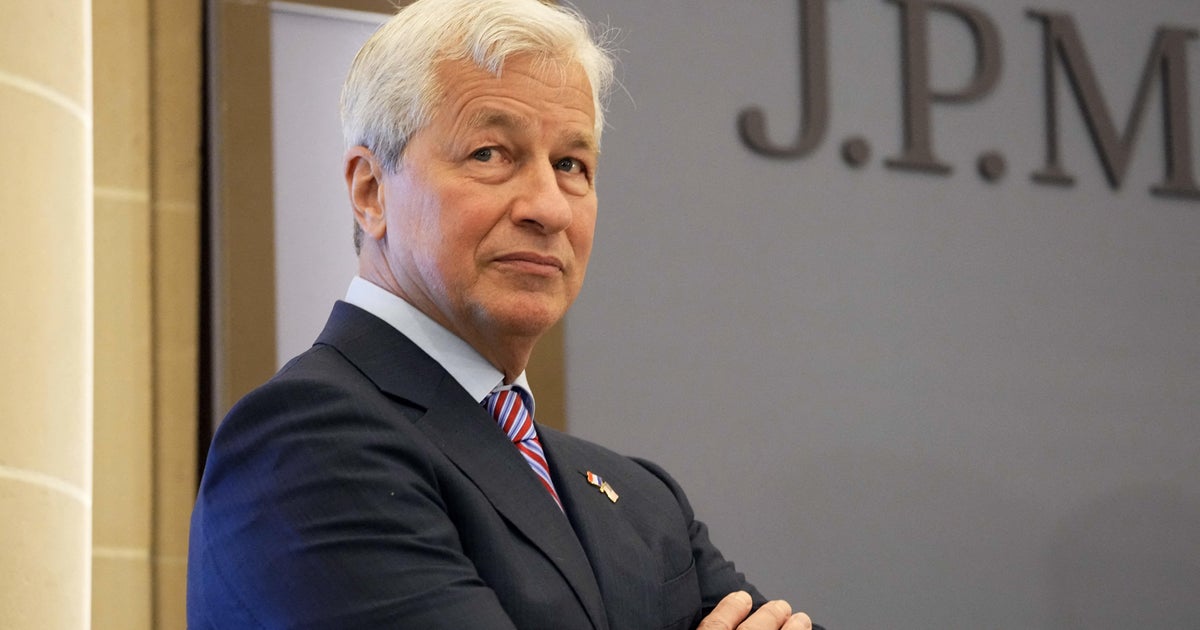CBS News
Boy, 10, charged after driving stolen car near crowded Minneapolis playground

MINNEAPOLIS — Minneapolis police arrested a 10-year-old boy for allegedly driving a stolen vehicle near a school playground last month — and it’s not the boy’s first brush with the law, police said.
The Sept. 20 incident was caught on video. The Minneapolis Police Department said it happened at Nellie Stone Johnson School in north Minneapolis when the playground was “crowded.”
“Fortunately, no children on the playground were struck by the driver,” the department said.
Police booked the 10-year-old into the Hennepin County Juvenile Detention Center Thursday. According to the department, this is at least his third arrest and he is a suspect in a dozen cases ranging from “auto theft to robbery to assault with a dangerous weapon.”
“It is unfathomable that a 10-year-old boy has been involved in this level of criminal activity without effective intervention,” Police Chief Brian O’Hara said. “Prison is not an acceptable option for a 10-year-old boy. But the adults who can stop this behavior going forward must act now to help this child and his family.”
Police said the boy’s family members are cooperating and “have asked for help to keep their son or anyone else from being injured or killed.”
Minneapolis Police
Justice for metro’s youth offenders is complex, daunting issue
On Friday, the Hennepin County Attorney’s Office announced criminal charges have been filed against the boy, but couldn’t comment further due to his age.
The office says if a court-appointed psychologist deems any offender, including a child, incompetent to stand trial, and a judge agrees with the recommendation, the case “must be dismissed or suspended, and the child must be released from custody.”
“We are facing an urgent crisis in our community related to a small group of children who are not competent to stand trial in the juvenile justice system, but who cannot safely be at home,” an attorney’s office spokesperson said in a statement.
The office says it “cannot charge or prosecute our way out of this crisis,” and adds it’s working with law enforcement, county and state partners in the hope of creating “out-of-home placements” for young offenders with “complex needs.”
“What we need is clear: residential placements with varying levels of security in our community that are resourced and staffed to be able to accept and successfully treat our youth with complex needs,” the spokesperson wrote. “And we need urgent and immediate action to address this issue now.”
Why the metro’s juvenile facility centers are shuttered
In 2019, two metro facilities for juvenile offenders were closed after being in operation for more than 100 years: Minnetonka’s Hennepin County Home School and St. Paul’s Totem Town.
The closings came after leaders in Hennepin and Ramsey counties decided to move away from the practice of confining child offenders in favor of a new data-driven system emphasizing the use of alternative methods like intensive treatment homes and community- and cultural-specific programs.
Data show since the closures, crimes committed by youths like arson, auto thefts and robberies have increased in the metro between 2019 and 2021.
Critics, like Ramsey County Undersheriff Mike Martin, say the shift away from confinement has backfired.
“We’re failing these kids,” Martin told WCCO in 2022. “The criminal justice system no longer holds them accountable or provides meaningful intervention to them.”
MCF-Moorhead and MCF-Red Wing are two Minnesota juvenile facilities that take in the state’s most violent young offenders. But the rest are mostly sent home after being arrested.
Lisa Clemons, founder and chief executive officer of Minneapolis-based A Mother’s Love Initiative, told WCCO in 2022 that young offenders are emboldened by the lack of consequences.
“They know it’s a revolving door downtown,” Clemons said. “They take full advantage of being juveniles, and we have allowed the lawlessness long enough that they have absolutely no fear.”
CBS News
JPMorgan Chase denies Trump’s claim that CEO Jamie Dimon has endorsed him

JPMorgan Chase CEO Jamie Dimon has not endorsed Donald Trump, the financial giant said Friday after the former president claimed in a social media post that the executive, America’s most prominent banking industry leader, was supporting him.
“Jamie Dimon has not endorsed anyone. He has not endorsed a candidate,” Joe Evangelisti, a spokesperson for the New York-based bank told CBS News in a statement.
The denial came after the Republican presidential nominee posted a screenshot on his Truth Social account falsely stating, “New: Jamie Dimon, the CEO of JPMorgan Chase, has endorsed Trump for president.”
Trump told NBC News he didn’t know about the post, which was still visible on his account as of 5:10 p.m. Eastern Time.
The Trump campaign did not immediately respond to a request for comment.
Seemingly coming from a verified account on X earlier in the day, the post swiftly drew attention from various pro-Trump accounts before Trump weighed in.
Before Trump won the Republican nomination for president, Dimon had expressed support for former South Carolina Governor Nikki Haley during the party’s primaries.
Friday’s Truth Social post is not the first in which Trump incorrectly suggested winning support by a high-profile person. The former president in August posted AI-generated images claiming that Taylor Swift was backing him. The superstar endorsed his opponent, Kamala Harris a few weeks later.
CBS News
CDC launches new way to measure trends of COVID, flu and more for 2024

The Centers for Disease Control and Prevention has launched a new way for Americans to look up how high or low levels of viruses like COVID-19 and flu are in their local area for 2024.
This year’s new “community snapshot” is the CDC’s latest attempt to repackage its data in one place for Americans deciding when to take extra precautions recommended in its guidelines, like masking or testing, going into the fall and winter.
It centers around a sweeping new weekly metric called “acute respiratory illness.” The metric’s debut fulfills a goal laid out by agency officials months ago, aiming to measure the risk of COVID-19 alongside other germs that spread through the air on a single scale from “minimal” to “very high.”
“The biggest thing we’re trying to do here is not just to have a dashboard. It’s not just putting a bunch of information in front of people and kind of expecting them to navigate all of that,” the CDC’s Captain Matthew Ritchey told CBS News.
Ritchey, who co-leads the team that coordinates data fed into the snapshots, said the CDC gathers experts from across the agency every Thursday to walk through the week’s data coming from hospitals and emergency rooms, wastewater sampling and testing laboratories.
“All those groups come together, talking through their different data systems and their expertise to say, ‘this is what’s catching my eye.’ And then that’s what we want to tee up for the public,” he said.
Ritchey cited early signs of respiratory syncytial virus, or RSV, starting to increase this season as expected in Florida, which is called out at the top of this week’s report.
Behind the CDC’s new “respiratory illness” metric
Based on emergency room data, the “acute respiratory illness” metric, grades overall infections in each state or county from “minimal” to “very high.”
That is defined broadly to capture infections from COVID-19 and influenza, as well as a range of other diseases that spread through the air like whooping cough or pneumonia.
A previous definition the agency had relied on called “influenza-like illness” had been too narrow, Ritchey said, with requirements like fever which excluded many patients.
A separate set of standalone levels is still being calculated each week for COVID-19, influenza and RSV.
The formula behind those levels is based on historical peaks and valleys in emergency room trends, which were analyzed from each state.
“We’ve looked over the last couple of years and understand the low points of the year, based on our lab testing, and at that point we say, that’s the baseline or ‘minimal’ category,” said Ritchey.
How to see what COVID variants are dominant
Not all of the CDC’s data made the cutoff to be included on the first layer of the agency’s new snapshot.
For example, while the front page for the general public does mention current SARS-CoV-2 variants like XEC, details about its prevalence remain on a separate webpage deeper into the CDC’s website.
“That whole jumble of lots of acronyms or letters and things like that just don’t overly resonate with them,” he said.
For flu, the CDC is still publishing more detailed weekly updates designed for experts, through the agency’s “FluView” reports.
Those include a weekly breakdown of the “type” – influenza A or B – and “subtype” – like H3N2 or H1N1 – that is being reported to the agency from testing laboratories.
Health authorities closely watch trends in flu subtyping as well, since they can help explain changes in the severity of the virus as well as vaccine effectiveness.
Future changes to come
The snapshot remains a work in progress as the CDC gathers feedback from the public as well as local health departments.
“We have a continuum of users, from the public health practitioner to my parents, providing feedback on how they’re using it. More often, the feedback we get is, ‘hey, I use this to help inform how I work, or talk with my elderly parents,'” he said.
One big change coming later this season is the resumption of nationwide hospitalization data, after a pandemic-era requirement for hospitals to report the figures to the federal government lapsed.
A new rule by the Centers for Medicare and Medicaid Services to start collecting the data again for COVID-19, influenza and RSV is due to take effect in November.
“As that data starts to come in again and gets to a robust enough level, the plan is that it would be incorporated on the site as well,” he said.
Another long term goal is to add information specific to other respiratory illness culprits beyond COVID-19, influenza and RSV.
“We want to be able to talk about maybe some of the other things that are not the big three as well, like mycoplasma and some of those other things too, that we know peak during certain parts of the season,” he said.
CBS News
Obama campaigning for Harris, Musk will join Trump

Watch CBS News
Be the first to know
Get browser notifications for breaking news, live events, and exclusive reporting.









